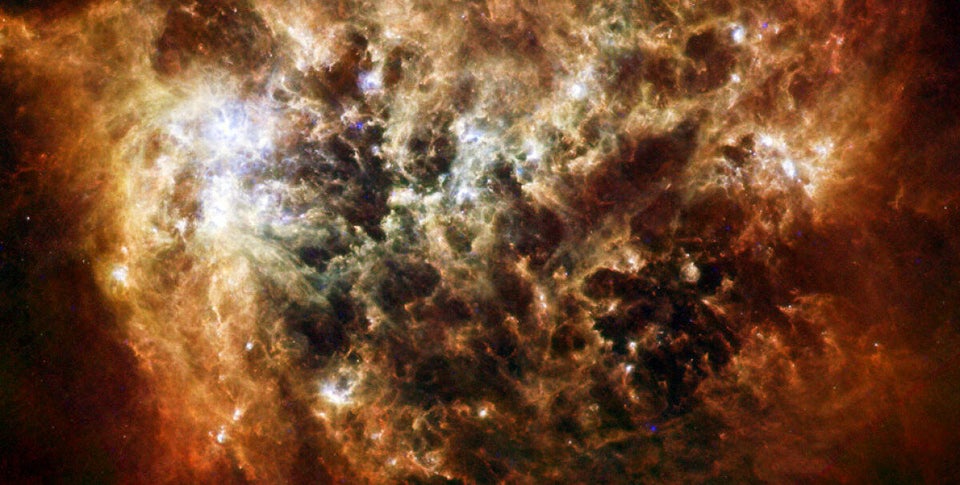The first results from the most costly experiment ever conducted in space have begun to unravel one of the universe's greatest mysteries.
The £1.32 billion Alpha Magnetic Spectrometer (AMS), attached to the outside of the International Space Station, is designed to shed light on the nature of dark matter.
Making up around 26% of the universe, this is the mysterious "stuff" that cannot be seen or detected directly but which binds the cosmos together.
Until now scientists have only been able to theorise the existence of dark matter. Its ghostly presence around galaxies exerts a gravitational effect that can be measured, but what it is made of is still a matter of speculation.
The AMS results announced by the American space agency Nasa show it has made detections consistent with dark matter colliding with itself and 'annihilating' - the so-called "smoking gun" of dark matter.
But scientists stressed that there was a long way to go before the evidence could be considered definitive.
"It could take a few more years," AMS spokesperson Roberto Battiston told the BBC.
The evidence relates to the leading theory that dark matter is composed of exotic particles known as Wimps (weakly interacting massive particles).
If Wimps exist, they would annihilate each other when they collide to release electrons and their antimatter equivalent, positrons.
It is these electrons and positrons left behind by dark matter collisions that AMS is looking for. By analysing the ratio of positrons to electrons and measuring the energy of the particles, scientists hope to find the first solid clues to the nature of dark matter.
A rise in the positron energy followed by a dramatic fall would provide tantalising evidence of Wimp collisions.
Another telling sign would be the direction the positrons are coming from. If they are generated by dark matter, they should be spread evenly through space. But if they are created by a normal process, such as an exploding star, they would originate from a single direction.
The seven ton AMS was installed on the International Space Station in May 2011 and since then has been collecting data from millions of light years beyond our galaxy, the Milky Way.
So far it has detected more than 25 billion particle events, sifting the information at a rate of seven gigabits a second around the clock.
Ordinary matter, the kind that makes up stars, planets and ourselves, only accounts for about 4% of the universe, scientists believe. The remaining 70% of the cosmos is thought to consist of dark energy, an even bigger enigma than dark matter, which appears to be driving galaxies apart at an accelerating rate.
